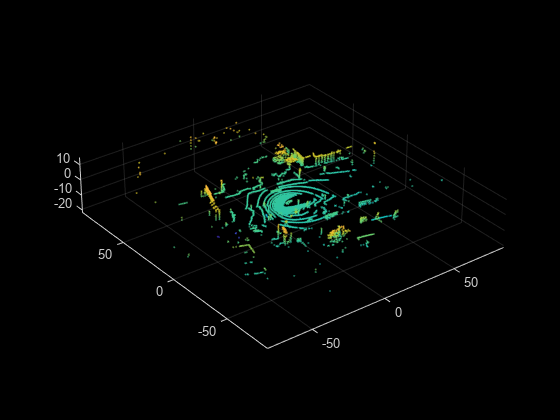vision.labeler.loading.VelodyneLidarSource Class
Namespace: vision.labeler.loading
Superclasses: vision.labeler.loading.MultiSignalSource
Load signals from Velodyne lidar sources into Lidar Labeler app
Description
The vision.labeler.loading.VelodyneLidarSource class creates an interface
for loading a signal from a Velodyne® packet capture (PCAP) lidar data source into the Lidar Labeler app. In the Select Point Cloud dialog box of the app, when
Source Type is set to Velodyne Lidar, this
class controls the parameters in that dialog box.

To access this dialog box, in the app, select Import > Add Point Cloud.
This class loads Velodyne PCAP files from the device models accepted by the velodyneFileReader function.
The vision.labeler.loading.VelodyneLidarSource class is a handle class.
Creation
When you export labels from a Lidar Labeler app session that contains a
Velodyne lidar source, the exported groundTruthLidar object stores an
instance of this class in its DataSource property.
To create a VelodyneLidarSource object programmatically, such as when
programmatically creating a groundTruthLidar object, use the
vision.labeler.loading.VelodyneLidarSource function (described
here).
Description
velodyneSource = vision.labeler.loading.VelodyneLidarSourceVelodyneLidarSource object for loading a signal from a
Velodyne lidar data source. To specify the data source and the parameters required to
load the source, use the loadSource method.
Properties
Methods
Examples
Version History
Introduced in R2020b
